There are many bed bugs, but all bed bugs kinds are small insects without wings. Their colour is mostly brown, with a slight reddish tint. These insects feed on human blood, and it is known that bed bugs do not spread any diseases. They can cause reactions leading to severe skin allergies in some individuals.
The size of an adult bed bug is similar to that of an apple seed. they usually live in gaps and spaces such as seams of mattresses, between slats on the bed base, cracks between floorboards, curtain seams, and even power sockets.
All bed bugs kinds especially adult have a flat, oval-shaped body ranging from 1 to 5 mm in length. They have six legs, long antennae, and a large lower jaw, which can harm or disfigure human skin.
They come out at night to feed on human blood, as mentioned earlier. Therefore, all bed bugs kinds can be found in places frequented by guests, such as hotels, hospitals, shelters, and accommodation facilities.
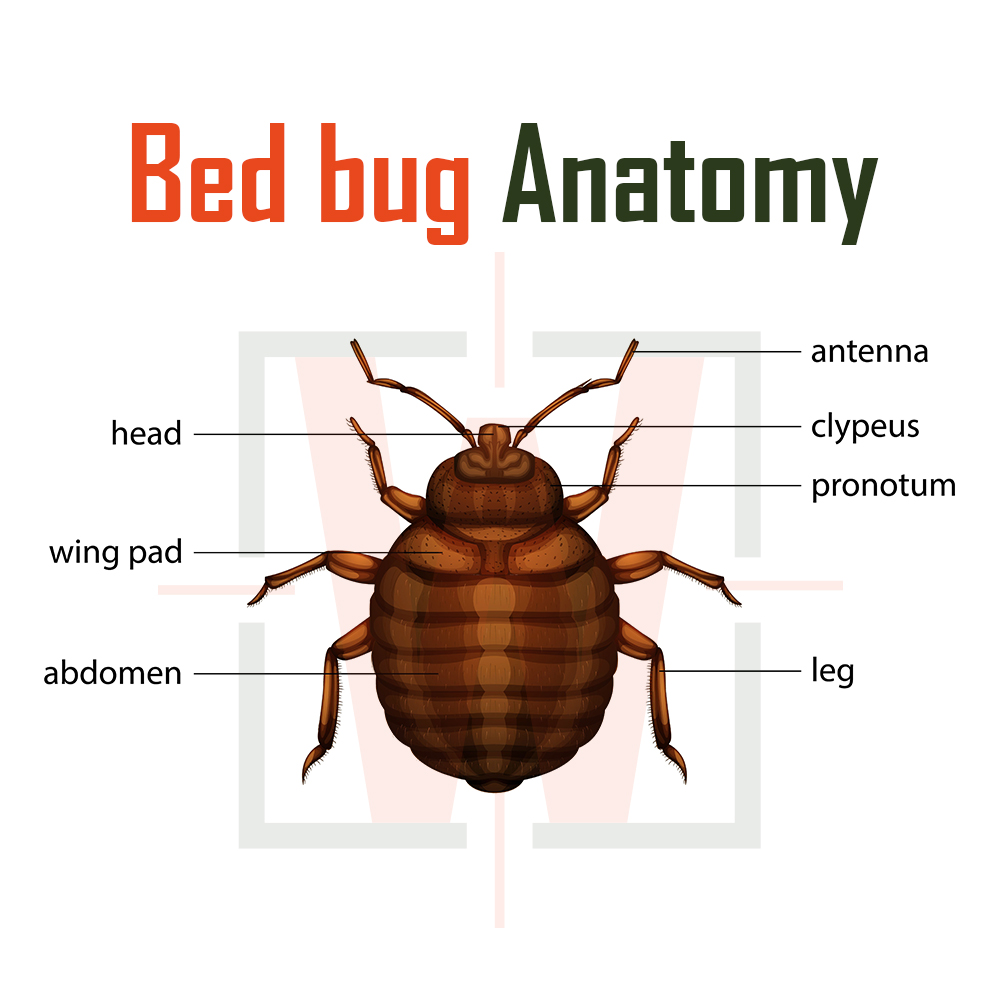

Bed Bug Life Cycle
In the Australian environment, adult bed bugs have a lifespan of up to 6 months, which can vary based on their feeding habits. Female bed bugs typically lay two or three white eggs per
day, amounting to as many as 3500 eggs over their lifetime. Under warm conditions, these eggs typically hatch within 5-10 days, although they may remain dormant for extended periods if conditions are not optimal. Newly hatched nymphs closely resemble adults but are smaller, transparent, and white. Infestation sites often have a higher population of nymphs compared to adults.
bed bug treatment and causes
bed bugs treatment is easy if it is done initially, but first let’s explain why bed bugs appear?
recently, cases of bed bugs have risen, and they are common around the world, and have been found in Australia in small numbers, but they have been increasing dramatically over the past 10 years.
The cause of this spread is insecticide resistance. all Bed bugs kinds are highly capable of resisting many commonly used insecticides, and there are of course other factors for the emergence of bed bugs such as frequent travel and mobility around the world with bed bugs spreading in luggage, footwear and clothing. So once you have bed bugs in accommodation for a long time and then move around in a new house, you do a new invasion.
The reasons for the appearance of bed bugs kinds can be shortened in the following points
Food Presence:
Bed bugs may appear if there are food residues on your bed or in its surroundings. It is important to clean the area thoroughly and dispose of any food leftovers.
Dust Accumulation:
Dust and dirt on the bed and in the room can be a suitable place for the reproduction of bed bugs. So, Regular cleaning of the room is recommended.
Bed Inspection:
Bedding can carry bed bugs. If you have travelled or been in public places such as hotels, you may have brought these insects with you. So periodically checking the bedding and using a bedding-resistant cover may help avoid their transmission.
Travel:
Travel can be a means of transferring bed bugs from one place to another. It is important to check luggage and clothes after travelling and take necessary precautions.
Social Exchange:
Bed bugs can be transferred between places through social interactions or the shared use of personal belongings.
Furniture Transfer:
In some cases, bed bugs may appear due to the movement of furniture that may be contaminated.
Get A Free Quote
Feel Free to connect with us
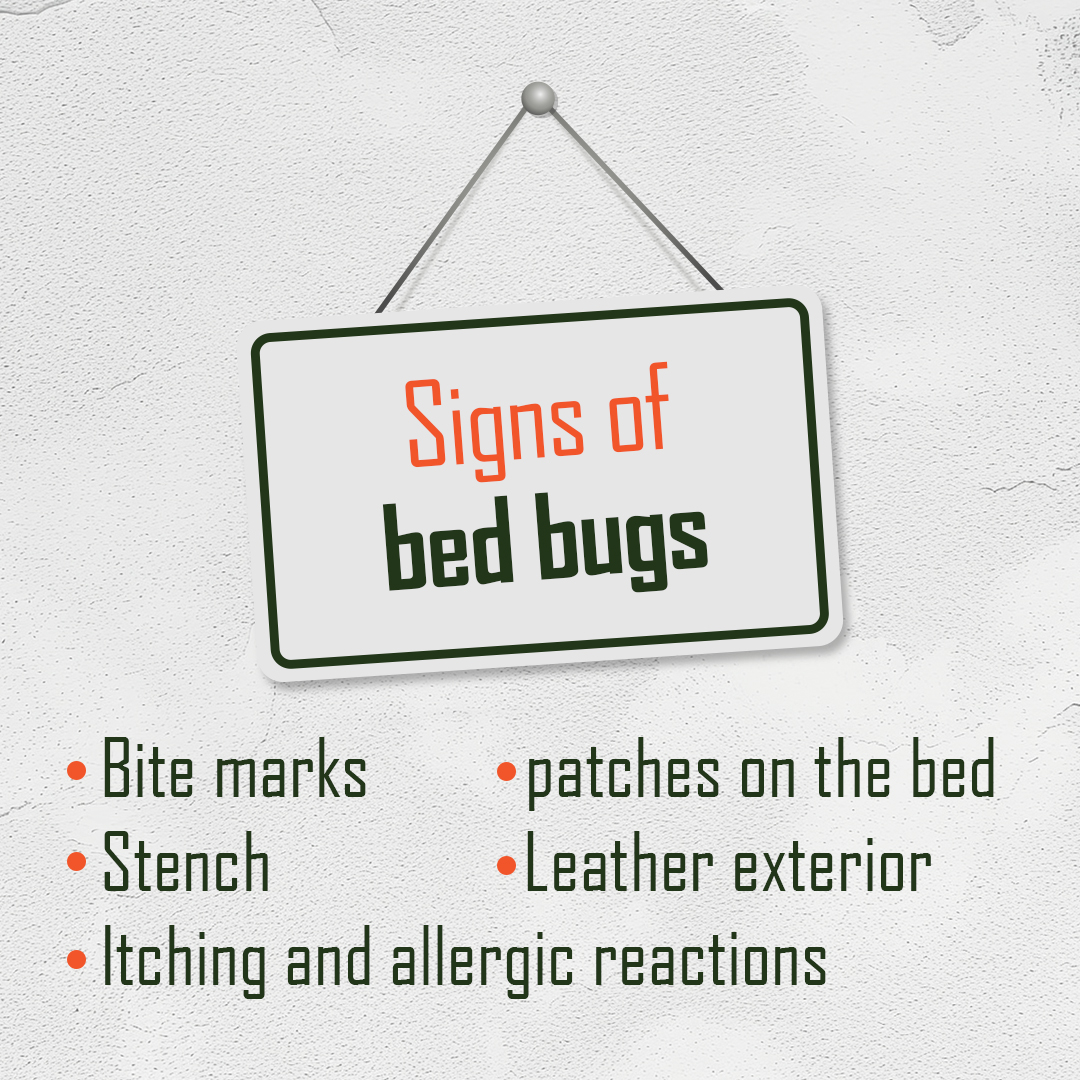
What are the signs and symptoms of bed bugs?
The bed bug treatment is not difficult, but let’s at first explain the symptoms and signs of bed bugs kinds that appear, these symptoms can be summarized in the following points:
Bite marks
The appearance of bites of bed bugs on the skin, usually red and itchy and may slightly resemble mosquito bites. The effect of biting bed bugs varies from person to person. Some may suffer from severe itching and others show a very weak vibe.
Brown red patches on the bed
After bed bugs feed, small blood stains are left on sheets or pillowcases and mattresses, this can be an indication of the presence of bed bugs at home.
Leather exterior
All types of bed bugs go through multiple stages of life and during those stages bed bugs get rid of their exoskeleton during growth. If they are found in the hiding places we mentioned or around these places, know it’s an indication of the presence of bed bugs.
Stench
In the case of severe bed bugs it is possible to emit a distinctive mold smell, often in enclosed spaces where bed bugs are anchored.
Itching and allergic reactions
Unexplained itching, especially at the time of awakening, may be symptomatic of bed bug bites, as some individuals have severe allergic symptoms towards any bites and if you have any symptoms, do not hesitate to undergo a thorough examination.
bed bugs kinds
There are primarily two common species of bed bugs that infest human dwellings: Cimex lectularius and Cimex hemipterus. Cimex lectularius is more prevalent in temperate regions, while Cimex hemipterus is typically found in tropical regions. Both species feed on the blood of humans and other warm-blooded animals.
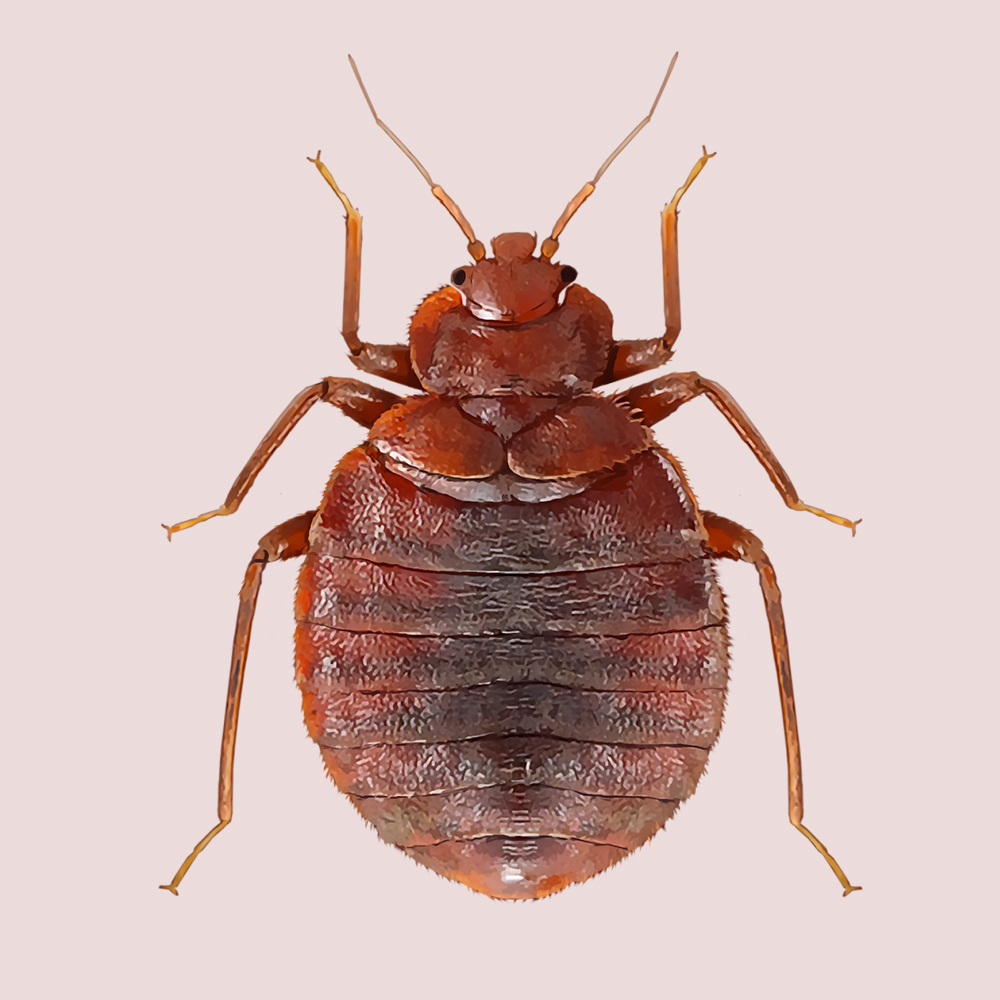
Adult bed bugs
This type of bug bug kinds is easy to detect as it has the following specifications:
- Size of apple seed
- Long and brown color and possess oval flat body
- It looks like a balloon if it feeds on human blood, and it becomes reddish brown and more elongated.
- He has wings but he doesn’t fly and his hair is short.
- Stinky smell close to mold smell
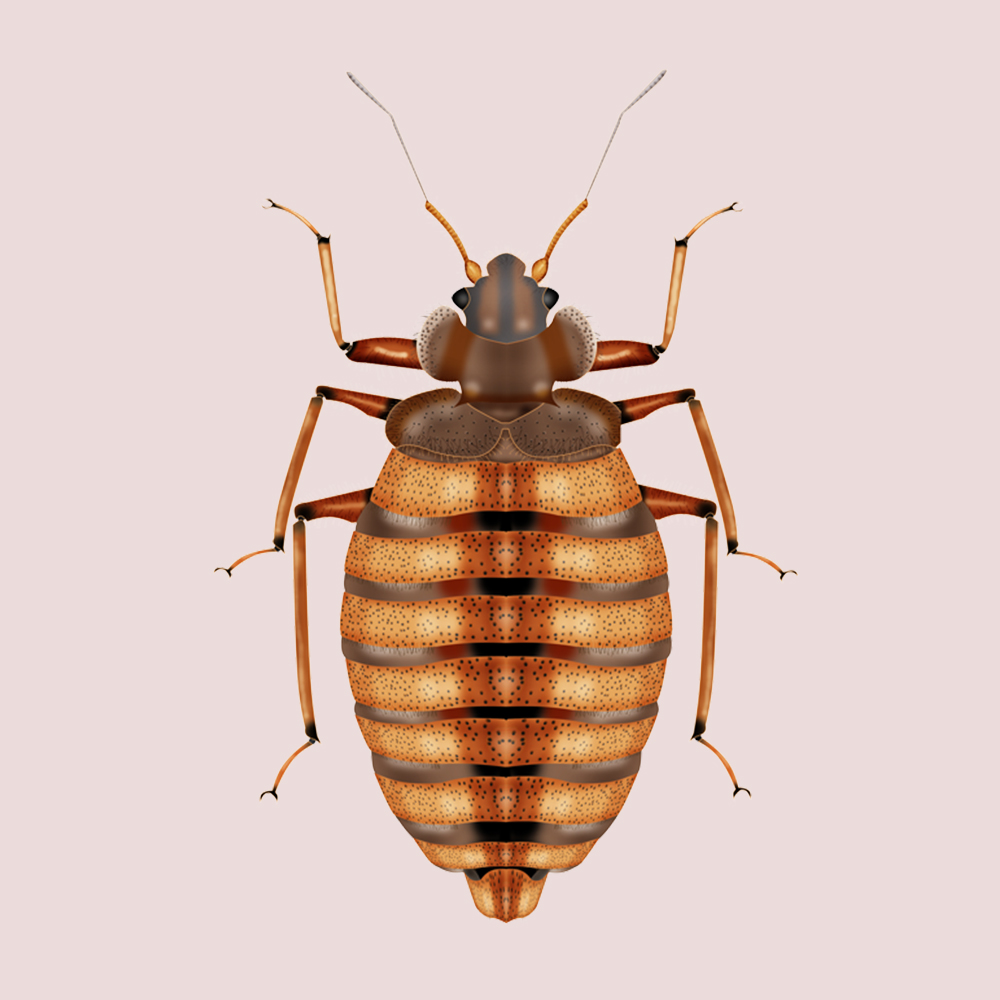
Small bed bugs
All bed bugs kinds are small but this type, as it appears from its name, is very small, and has the following features:
- Light weight
- Its color is yellowish-white
- If it doesn’t feed on humans’ blood, it’s not visible because of its light colour and very small size.
Shrink

Bed bugs eggs
This is one of the most difficult types of bed bugs because it can’t be easily detected and what distinguishes this type among all bed bugs kinds:
- small size. Similar to the head of a pin.
- pearl-like in its white color
- Its shape turns into a stain if it remains for 5 days or more.
Shrink
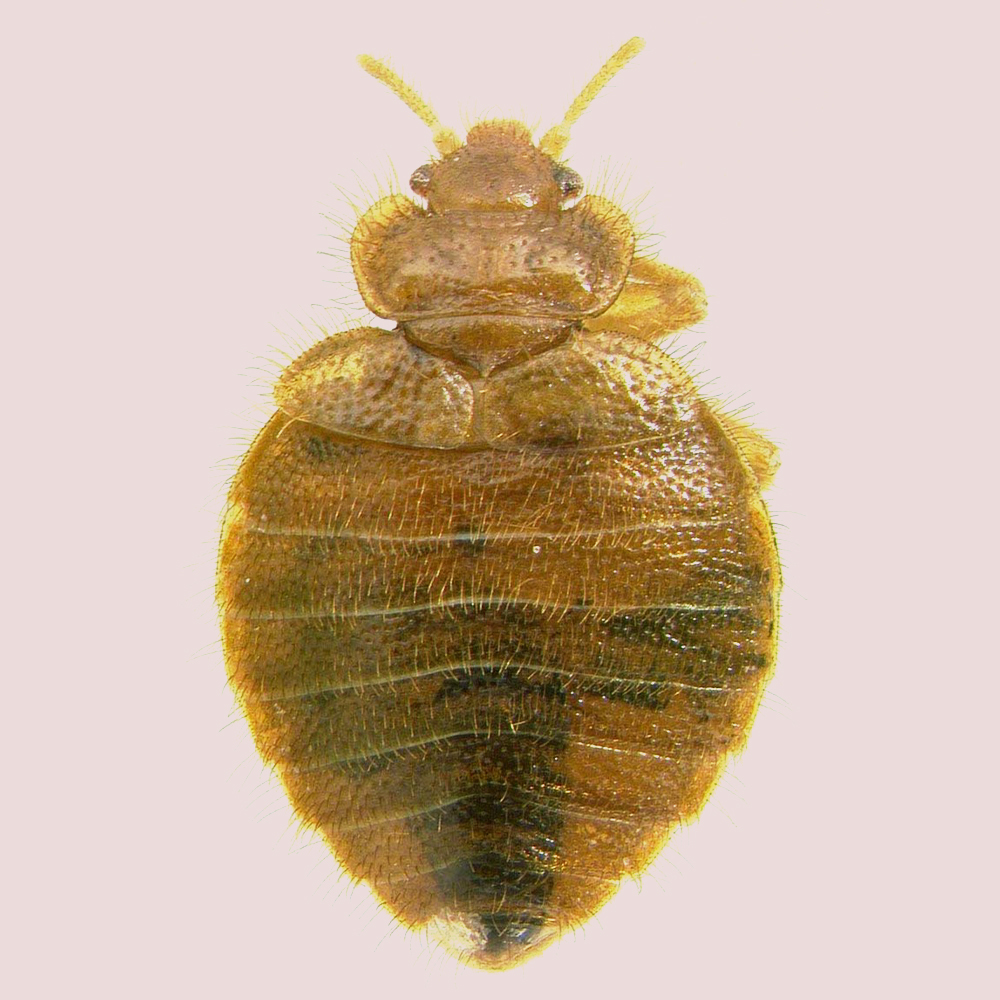
Bat bugs
It is one of the most common types among bed bugs kinds. It feeds on human blood, causing complications and negative effects.
Bat bugs has the following features:
- Hides in extreme darkness.
- Similar to adult bed bugs but differs in the head region.
- has long hair near its head.
bed bug control procedures
bed bug treatment is a problem for many people, especially if you use single treatment to eliminate them completely. For example, sprays may be a good bed bug treatment or good for most of bed bugs kinds, but are ineffective in bed bugs eggs we mentioned earlier. Therefore, bed bug control requires constant inspections and follow-up from companies responsible for bed bug control in Sydney.
Because most bed bugs kinds are very small, this makes detection and bed bug treatment more difficult, especially if they aren’t treated promptly (the longer the infestation persists, the treatment becomes more difficult).
Bed bug control becomes more difficult if there are multiple infested areas, so all rooms and adjacent areas to the bed bug infested area must be constantly checked.
Non-chemical bed bug treatment
We can only consider non-chemical bed bug treatment as management tools. You can use them to reduce the number of bed bugs kinds not to eliminate them completely. Complete elimination of bed bugs kinds infestation is unlikely unless insecticides are used.
Hygiene:
It’s essential to clean the infested area or room which infested with bed bugs kinds such as regular vacuuming behind beds.
Physical removal:
You can use adhesive tape if the number of bed bugs kinds is low. Vacuuming is also recommended before chemical treatment because it removes all dust and debris from the site, area or room infested with bed bugs, that make it easier for following chemicals bed bug control to penetrate and becomes more effective.
You should Paid particular attention to the edges of the room, near furniture and around fixtures. The vacuum bag should be placed in a sealed bag and discarded appropriately, immediately after cleaning.
Heat:
Increasing the temperature rapidly is an excellent method for bed bug control in bedding and any other places.Bed bugs will die within one hour when exposed to temperatures over 45 degrees Celsius, or immediately at temperatures exceeding 60 degrees Celsius.
Heating items using steam has the advantage of bed bug control at all stages of their life cycle. Steam can be used on all soft and hard surfaces, especially on seams and in small crevices. Washing clothes in water above 60 degrees Celsius (to ensure killing all bed bugs kinds) and drying infested linens in a dryer is an effective method for killing bed bugs. It is recommended to set the clothes on the hot setting and dry them for at least 30 minutes.
Solar Heating:
It is said that heating through solar energy is one of the most effective methods to bed bug control, by placing infested materials of bed bugs kinds in a black plastic bag and leaving it in the heat of the sun for an extended period. On the other hand, scientific research has shown that this method may not be effective in the case of large items infested with bed bugs such as mattresses.
Cold:
Rapid freezing can be an effective bed bug treatment for all bed bugs kinds. as placing small-sized items overnight in the freezer is a very effective way to bed bug control.It is suggested to leave items in freezer for 10 hours per 2.5 kg of dry linen weight.
chemical bed bug treatment
It is a requirement of Australian law that only those insecticides that are either currently registered or permitted for use by the APVMA for the bed bug control may be used. The label of the product must be consulted to ensure that it is currently registered and its use in the proposed situation is permitted. However, due to insecticide resistance of bed bugs in the field, registration of a product by the APVMA is not proof of efficacy as the APVMA does not require that efficacy data is provided on modern insecticide resistant bed bug strains.
The insecticides to be applied must be directed to the insects and all harbourage areas identified in the inspection process, in accordance with label instructions. In most infestations, the carpet and underlay should be peeled back for at least 30cm, and the straight edge treated underneath. Following the completion of treating the infested room, it may be advisable to treat the adjoining rooms even if no bed bugs were seen in the inspection.
It is necessary to note that not all surfaces can be treated with all insecticides, so the label needs to be carefully checked . For example, some organic carbamate and phosphorus compounds cannot be used on mattresses. If mattresses are to be treated, there are often specific instructions for this use and it is advisable to recommend to put a non-porous cover between the mattress and sheets. The use of insecticides on a mattress should be reduced to reduce human exposure to risk or damage and other side effects, and it is best to use vacuum cleaning and steam first to remove and eliminate bed bugs on beds.
In the past, fumigation substances were widely used, and some are registered for bed bug control. However, this is a very specialized field and consulting a qualified specialist is necessary.
In September 2011, amorphous silica, more commonly known as Diatomaceous Earth Dust (DED), was registered for bed bug control. DED is a slow acting compound taking up to 1-2 weeks for a complete kill with adult bed bugs, although is much quicker on the nymphal stages. It does however offer anumber of advantages over other products; it is highly residual with an extremely long shelf life, dusted bed bugs can transfer the insecticide to other bugs thereby killing others indirectly, there is a low probability of resistance developing due to its physical mode of action, dose rate is not as critical compared with other products (under-dosing results in a longer time to achieve a complete kill), it has very low mammalian toxicity and is often recommended by environmental groups, and DED could be used in a prophylactic sense to minimise the risk of bed bugs establishing in otherwise uninfested rooms. Other management means should be used to quickly reduce the biomass of infestations when DED is employed, however this product
should prove highly beneficial in bed bug management.
In 2010, Phantom SC Insecticide was registered in the Australia for the control of bed bugs. Published efficacy data have demonstrated variable results; while two laboratory investigations have found that the product would slowly kill all bed bugs exposed, another found the product so ineffective that the treated bed bugs mated and laid eggs, with many of the hatching nymphs surviving. A third laboratory trial, from Australia, found that the product was unable to kill any bed bug strain, even those susceptible to the pyrethroids (Doggett et al. 2011). Two field investigations have also demonstrated poor efficacy; in one of the trials complete control was not achieved over five months despite repeated applications with the product (Doggett et al. 2012). In light of the generally variable published efficacy results, the use of Phantom SC Insecticide against bed bugs is not supported.
Read more about bed bug control
Here are some essential facts about bed bugs
Ancient Pests: Bed bugs have been around for thousands of years, with historical records dating back to ancient civilizations like the Egyptians, Greeks, and Romans. They were even mentioned in medieval European literature.
Nocturnal Feeders: Bed bugs are nocturnal insects, meaning they are most active at night. They feed on the blood of humans and animals while they sleep, typically just before dawn.
Resilient Survivors: Bed bugs are incredibly resilient pests. They can survive for several months without feeding and can withstand a wide range of temperatures, from nearly freezing to over 120°F (49°C).
Hitchhikers: Bed bugs are expert hitchhikers and can easily be transported from one place to another through luggage, clothing, bedding, and furniture. This is a significant factor in their spread, especially in areas with high population density and frequent travel.
Sneaky Hiders: Bed bugs are skilled at hiding in tiny cracks and crevices near their food source (humans). They can be found not only in beds but also in furniture, behind baseboards, in electrical outlets, and even in wallpaper seams.
Prolific Breeders: A single female bed bug can lay hundreds of eggs in her lifetime. The eggs are tiny, about the size of a speck of dust, making them difficult to detect.
Allergic Reactions: While bed bug bites are not known to transmit diseases, some people may experience allergic reactions to their saliva. These reactions can range from mild irritation to severe itching and swelling.
Detectable by Dogs: Bed bugs emit pheromones that can be detected by specially trained dogs. These dogs are used by pest control professionals to sniff out infestations in homes, hotels, and other buildings.
Increasing Problem: Bed bug infestations have been on the rise in recent years, possibly due to increased international travel, resistance to pesticides, and changes in pest control practices.
Challenging to Eradicate: Due to their resilience, ability to hide, and rapid reproduction rate, bed bugs can be challenging to eradicate once they infest a home or building. Effective treatment often requires a combination of methods, including thorough cleaning, heat treatments, and targeted pesticide applications.
In conclusion, it’s important to recognize the negative impact of having bed bugs in your home or where you are. As mentioned in the article, they can cause adverse effects such as skin allergies and severe itching. Therefore, it’s crucial to take precautionary measures to protect your home and rooms from all bed bugs kinds. Remember that combating bed bugs should be done by pest control specialists to ensure complete eradication. This applies not only to bed bugs but also to other pests like termites and German cockroaches. It’s essential to understand that monitoring and follow-up are necessary to ensure long-term control, and this monitoring should be conducted by pest control specialists
Get A Free Quote
Get A Free Quote